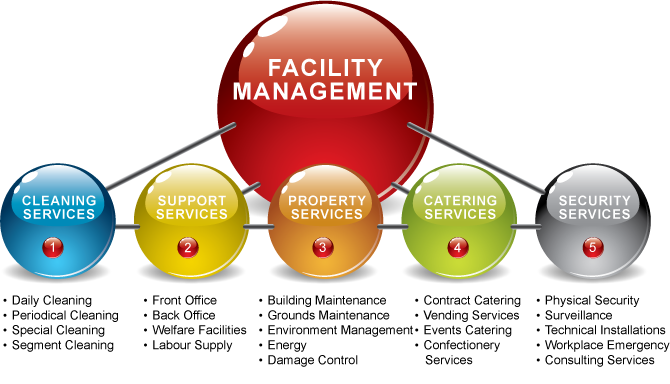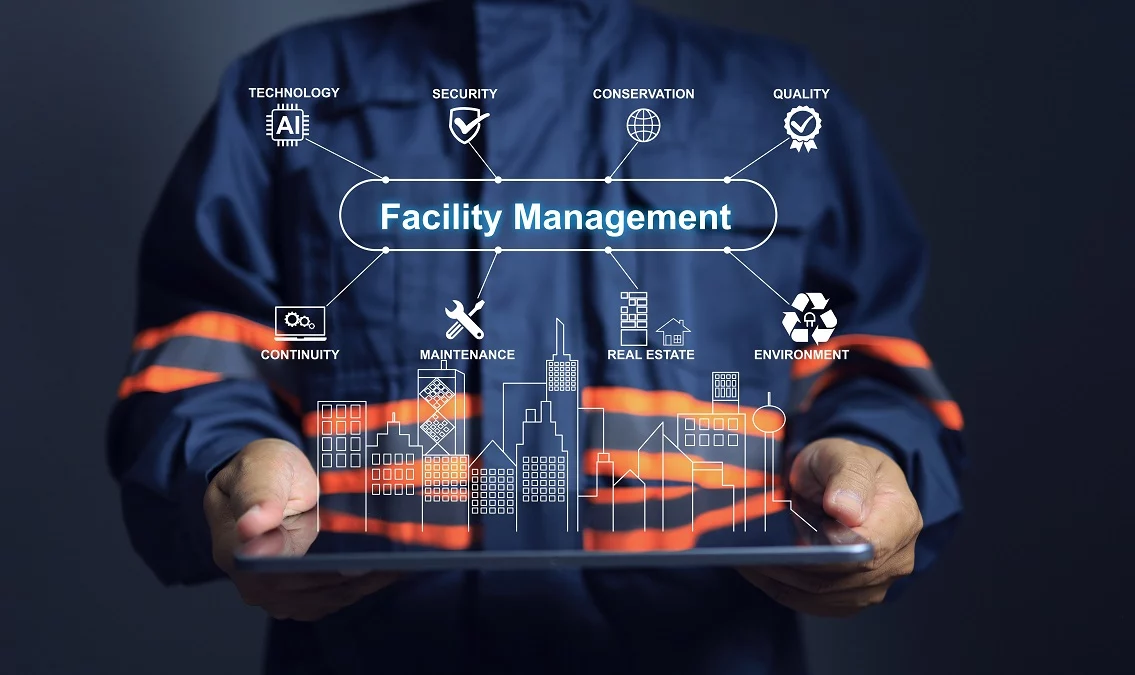How Facility Management Enhances Workplace Efficiency
The Vital Overview to Facility Monitoring: Techniques for Success
Center monitoring plays an important role in the general success of an organization, acting as the foundation that sustains effectiveness, productivity, and safety. By utilizing strategic strategies such as integrated technical options and fostering cross-departmental cooperation, organizations can significantly improve their operational structures. The subtleties of effective center management prolong beyond simple logistics and call for a detailed understanding of both measurable and qualitative metrics. As we explore these crucial techniques, a closer exam reveals just how they can transform not simply facilities, yet the very society within a company itself. What might these improvements look like in method?
Understanding Facility Administration
What comprises reliable facility administration? Efficient center monitoring incorporates the coordination of various organizational functions to guarantee that constructed settings are secure, reliable, and for performance. It incorporates the concepts of organization, style, and design management to create a smooth functional circulation within an organization.
Secret components of facility administration consist of space planning, maintenance monitoring, and conformity with health and wellness policies. Room preparation focuses on maximizing using physical resources to support organizational goals, while maintenance management makes sure that centers are maintained in ideal problem, making the most of lifespan and decreasing operational costs. Compliance with regulatory and legal criteria is crucial, as it safeguards the company versus possible responsibilities and boosts its online reputation.
In addition, reliable center administration depends on the tactical use technology, such as Building Monitoring Equipment (BMS) and Computer-Aided Center Administration (CAFM) tools. These modern technologies promote real-time surveillance of building systems and improve maintenance procedures (Facility Management). Eventually, a detailed method to facility monitoring not just promotes functional effectiveness but also cultivates a positive environment for staff members and visitors alike, driving overall business success

Key Approaches for Optimization
Optimizing facility monitoring requires a calculated approach that lines up functional experiment organizational objectives. To accomplish this, the initial key technique is the execution of incorporated technological services. Using innovative software program systems permits real-time monitoring of facility operations, assisting in data-driven decision-making and boosting total performance.
Secondly, regular assessments of facility performance are vital. Carrying out regular assessments and audits makes it possible for center supervisors to recognize locations that require renovation, making certain that sources are alloted effectively. This proactive approach helps in minimizing downtime and enhancing service delivery.
Another crucial strategy is fostering collaboration throughout divisions. By urging open interaction between teams, facility supervisors can much better straighten their techniques with service goals, resulting in improved operational synergy. Additionally, involving personnel in training programs promotes a culture of accountability and boosts their capacity to contribute to optimization efforts.
Enhancing Safety Methods
Reinforcing security protocols is important for creating a safe and secure atmosphere within facilities. A thorough security procedure not only shields site visitors and workers but additionally boosts functional performance. Facility Management. To attain this, center supervisors need to conduct normal risk analyses to make certain and determine prospective threats that proper measures remain in area

Additionally, clear communication channels must be developed to report safety and security problems without delay. This consists of developing an accessible platform for employees to articulate possible dangers or occurrences without concern of . Leveraging technology can enhance safety and security actions; for example, executing surveillance systems and access controls aids keep an eye on facility activities and restrict unapproved entrance.
Lastly, compliance with Click Here neighborhood guidelines and industry standards is non-negotiable. Regular audits and reviews of safety methods make sure alignment with current regulations and finest practices. By focusing on these methods, facility supervisors can grow a culture of safety that shields all stakeholders and eventually contributes to the company's success.
Improving Work Environment Environment
A positive office setting next page dramatically improves employee spirits and performance, making it an essential focus for center administration. To create such an atmosphere, center managers must prioritize a number of key aspects, including functional designs, aesthetic appeals, and staff member engagement.
Ergonomic factors to consider are necessary to reduce physical pressure and discomfort. This includes giving adjustable furniture, correct lighting, and appropriate room for movement. These modifications can bring about decreased absence and raised job fulfillment.
Aesthetics play an important function in forming the workplace atmosphere. Using shade psychology, all-natural lights, and Visit This Link greenery can promote a welcoming and promoting setting. Attentively designed spaces can increase imagination and enhance general health.
In addition, urging staff member engagement with inclusive decision-making processes can improve the feeling of ownership and belonging. Gathering feedback on workplace improvements and involving staff members in the layout procedure can cause a much more tailored environment that meets their needs.
Last but not least, advertising wellness efforts, such as wellness programs and leisure areas, can better add to an encouraging work environment culture. By focusing on these strategies, facility managers can effectively boost the office atmosphere, driving both employee satisfaction and business success.
Determining Success in Facilities
Determining success in center administration requires a comprehensive strategy that examines both quantitative and qualitative metrics. Quantitative metrics typically consist of essential efficiency signs (KPIs) such as room use rates, power consumption, upkeep costs, and tenancy levels. These metrics give a clear photo of functional effectiveness and economic performance, permitting facility supervisors to identify locations for improvement and standard against sector requirements.
Qualitative metrics, on the various other hand, emphasis on customer fulfillment and employee interaction. Studies and comments devices can evaluate just how well the facilities satisfy the demands of residents, assisting to assess the general office environment. This element is critical, as a pleased labor force is frequently connected to increased efficiency and retention prices.
To effectively measure success, center managers must additionally consider incorporating modern technology, such as building administration systems and information analytics devices, to collect and evaluate appropriate information. Routinely examining both collections of metrics permits for a more balanced view of performance and notifies calculated choices. Inevitably, an effective center management strategy hinges on a commitment to constant enhancement, making certain that both functional performances and customer satisfaction are prioritized.

Final Thought
In conclusion, reliable center management is crucial for boosting business performance. By applying integrated technical options, conducting normal evaluations, and fostering cooperation across divisions, organizations can attain ideal resource allowance and operational effectiveness. Prioritizing safety and security protocols and boosting workplace settings even more add to boosted employee fulfillment. Finally, gauging success through both measurable and qualitative metrics enables for continual improvement, inevitably leading to lowered operational prices and a more efficient business environment.
Facility management plays an important duty in the total success of a company, offering as the foundation that sustains security, effectiveness, and performance.Trick components of center administration include space preparation, upkeep administration, and compliance with health and safety and security policies.Furthermore, efficient facility administration depends on the calculated use of modern technology, such as Structure Administration Solution (BMS) and Computer-Aided Center Administration (CAFM) tools. Ultimately, a detailed approach to center monitoring not just advertises functional efficiency yet likewise fosters a favorable atmosphere for staff members and site visitors alike, driving overall organizational success.
Ultimately, a successful facility monitoring strategy pivots on a commitment to continuous renovation, guaranteeing that both functional effectiveness and user contentment are prioritized.